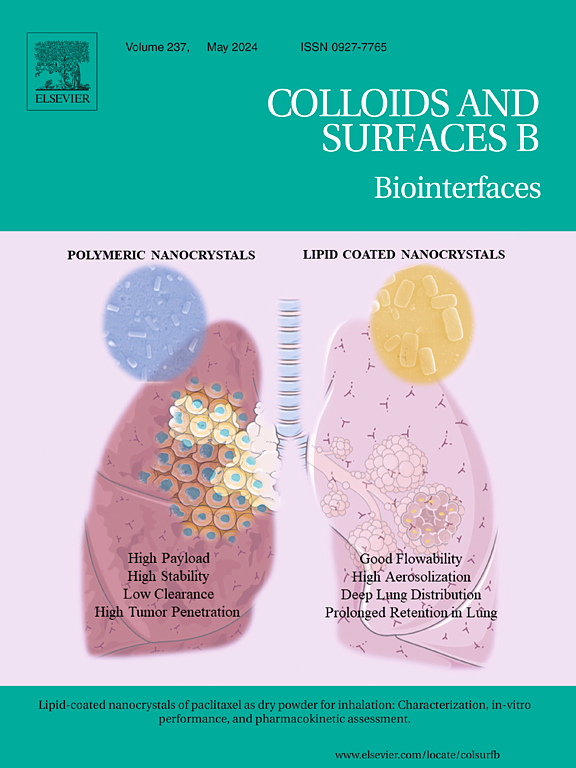Optimized synthesis and characterization of highly reproducible carbon dots for bioimaging applications
IF 5.4
2区 医学
Q1 BIOPHYSICS
引用次数: 0
Abstract
In this paper, we present the optimization of synthesis parameters to obtain highly stable fluorescent Carbon Dots (CDs). This was achieved through a multidisciplinary approach that combined systematic variation of synthesis conditions with comprehensive characterization techniques. Spectroscopic analyses, including absorbance and fluorescence measurements, along with transmission electron microscopy, confirmed the uniform morphology and distinctive optical emission of the CDs. Additionally, electron energy loss spectroscopy provided valuable insights into their chemical composition, while high-resolution transmission electron microscopy (HRTEM) revealed structural order at the nanometer scale. Among the synthesized CDs, those exhibiting the most promising optical and physicochemical properties were further tested to assess their cellular imaging potential, cytocompatibility, and non-toxicity. The data showed that CDs were cytocompatible and can permeate the cell membrane localizing in the cells. Notably, these CDs showed the ability to targeting mitochondria, underscoring their potential for analyses of mitochondrial structure and function in different physiological and pathological conditions.
用于生物成像应用的高可重复性碳点的优化合成和表征
在本文中,我们提出了合成参数的优化,以获得高稳定性的荧光碳点(CDs)。这是通过多学科方法实现的,该方法将合成条件的系统变化与综合表征技术相结合。光谱分析,包括吸光度和荧光测量,以及透射电子显微镜,证实了cd的均匀形态和独特的光学发射。此外,电子能量损失光谱为其化学成分提供了有价值的见解,而高分辨率透射电子显微镜(HRTEM)揭示了纳米尺度上的结构秩序。在合成的CDs中,对那些表现出最有希望的光学和物理化学性质的CDs进行了进一步的测试,以评估它们的细胞成像潜力、细胞相容性和无毒性。结果表明,CDs具有细胞相容性,可穿透细胞膜,在细胞内定位。值得注意的是,这些CDs显示出靶向线粒体的能力,强调了它们在不同生理和病理条件下分析线粒体结构和功能的潜力。
本文章由计算机程序翻译,如有差异,请以英文原文为准。
求助全文
约1分钟内获得全文
求助全文
来源期刊

Colloids and Surfaces B: Biointerfaces
生物-材料科学:生物材料
CiteScore
11.10
自引率
3.40%
发文量
730
审稿时长
42 days
期刊介绍:
Colloids and Surfaces B: Biointerfaces is an international journal devoted to fundamental and applied research on colloid and interfacial phenomena in relation to systems of biological origin, having particular relevance to the medical, pharmaceutical, biotechnological, food and cosmetic fields.
Submissions that: (1) deal solely with biological phenomena and do not describe the physico-chemical or colloid-chemical background and/or mechanism of the phenomena, and (2) deal solely with colloid/interfacial phenomena and do not have appropriate biological content or relevance, are outside the scope of the journal and will not be considered for publication.
The journal publishes regular research papers, reviews, short communications and invited perspective articles, called BioInterface Perspectives. The BioInterface Perspective provide researchers the opportunity to review their own work, as well as provide insight into the work of others that inspired and influenced the author. Regular articles should have a maximum total length of 6,000 words. In addition, a (combined) maximum of 8 normal-sized figures and/or tables is allowed (so for instance 3 tables and 5 figures). For multiple-panel figures each set of two panels equates to one figure. Short communications should not exceed half of the above. It is required to give on the article cover page a short statistical summary of the article listing the total number of words and tables/figures.
 求助内容:
求助内容: 应助结果提醒方式:
应助结果提醒方式:


